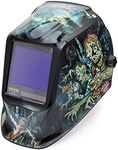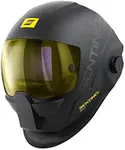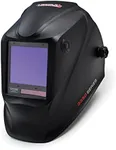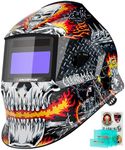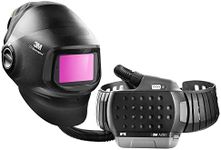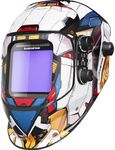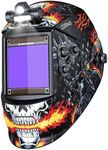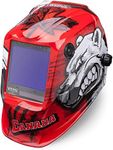Buying Guide for the Best Welding Helmets
Choosing the right welding helmet is essential for both safety and comfort while working. A good helmet protects your eyes and face from harmful light, sparks, and debris, while also allowing you to see your work clearly. When shopping for a welding helmet, it's important to understand the key features and how they relate to your specific needs and the type of welding you plan to do. By focusing on the main specifications, you can find a helmet that keeps you safe and makes your work easier.Lens Shade RangeThe lens shade range refers to how dark the helmet's viewing window can get to protect your eyes from the bright light produced during welding. This is important because different welding processes and power levels produce different levels of brightness. Helmets usually offer a range of shades, such as 9-13, with higher numbers providing more protection. If you do light-duty welding, a lower shade range may be enough, but for heavy-duty or industrial welding, you'll need a helmet with a higher shade range. Think about the types of welding you plan to do and choose a helmet with a shade range that covers those needs.
Auto-Darkening FilterAn auto-darkening filter automatically adjusts the darkness of the lens when you start welding, so you don't have to flip the helmet up and down. This feature is important for convenience and safety, as it allows you to keep your hands on your work and your eyes protected at all times. Some helmets have fixed shade auto-darkening, while others let you adjust the darkness. If you do different types of welding or want more flexibility, look for a helmet with adjustable auto-darkening. If you mostly do one type of welding, a fixed shade may be enough.
Viewing Area SizeThe viewing area is the size of the window you look through while welding. A larger viewing area gives you a better view of your work and surroundings, which can make welding easier and safer, especially for beginners or when working on larger projects. Smaller viewing areas can make the helmet lighter and may be fine for detailed or close-up work. Consider the size of your projects and how much visibility you need to choose the right viewing area for you.
Reaction TimeReaction time is how quickly the helmet's lens darkens when it detects the welding arc. Faster reaction times mean your eyes are protected more quickly from the bright light, reducing the risk of eye strain or injury. Reaction times are usually measured in fractions of a second. For most hobbyists, a standard reaction time is sufficient, but if you weld frequently or for long periods, a faster reaction time can provide extra comfort and protection.
Weight and ComfortThe weight and comfort of a welding helmet affect how long you can wear it without getting tired or uncomfortable. Lighter helmets are easier on your neck and head, especially during long welding sessions. Look for helmets with adjustable headbands and padding to ensure a good fit. If you plan to weld for extended periods, prioritize comfort and weight to avoid fatigue.
Power SourceAuto-darkening helmets need power to operate, usually from batteries, solar cells, or a combination of both. Battery-powered helmets may need regular battery changes, while solar-powered ones can recharge from the welding light or sunlight. Some helmets use both for longer life and reliability. If you want less maintenance, consider a helmet with solar assist. If you work indoors or in low light, make sure the helmet's power source will be reliable for your needs.

